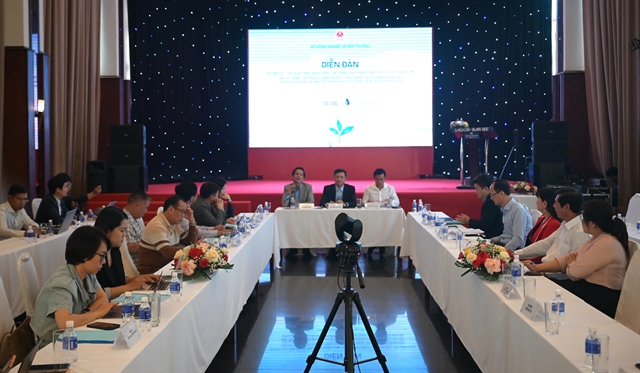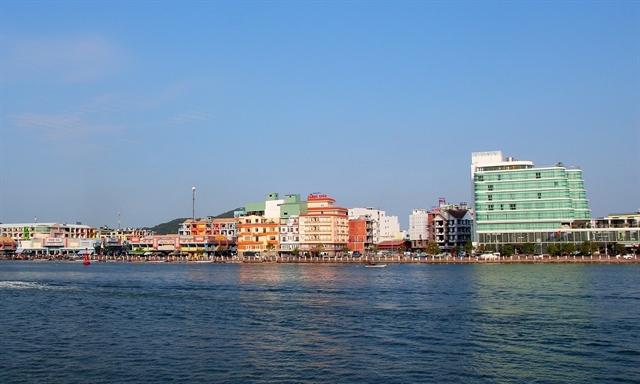 Environment
Environment

 |
| Hà Tiên City in Kiên Giang Province is among the urban areas standing at high risks of flooding. — VNA/VNS Photo Hồng Đạt |
HCM CITY — Localities in the Cửu Long (Mekong Delta) region are working hard to increase their urban areas’ adaptability to climate change, and boost urban development in a green and sustainable direction.
Climate change is posing a great challenge to the Mekong Delta region, especially erosion, landslides, flooding, and pollution.
Vice Director of the Department of Urban Development under the Ministry of Construction Trần Thị Lan Anh said that Việt Nam ranks 23rd out of the 30 countries that are hardest hit by climate change, and the Mekong Delta is one of the three floodplains with the largest land loss risk in the world.
It is forecast that by the end of the 21st century, the sea level will rise by 0.5-1m, affecting about 39 per cent of the area and 35 per cent of the population of the Mekong Delta. All the 13 localities in the region are at risk of flooding, which is higher in some large and medium-sized urban areas such as Rạch Giá and Hà Tiên cities (Kiên Giang Province), Cà Mau City (Cà Mau Province), Sóc Trăng City (Sóc Trăng Province), Vị Thanh City (Hậu Giang Province), and Cần Thơ City, Anh said.
Currently, the urbanisation rate of the Mekong Delta is 31.16 per cent, up 4.6 per cent from 2015. Under approved regional planning for the 2021-2030 period with a vision to 2050, the urban system of the region will be constructed with suitable distribution along major economic corridors.
Accordingly, Cần Thơ City, a centrally-run first-tier urban area, is defined as a centre of administration, services, commerce, health care, education - training, science - technology, culture, tourism and processing industry of the whole region.
Rạch Giá City will be developed into a hub of marine economy, trade and service in the western coastal area of the Mekong Delta, and a centre for aquatic farming, exploitation and export. Cà Mau City will be the centre of the coastal sub-region in the area of the Cà Mau Peninsula, and a national centre of energy and petroleum services as well as ecotourism services.
Currently, Cần Thơ is designing measures to develop sectors towards sustainability in association with environmental protection and climate change response to suit its real conditions in particular development periods.
The city is implementing a number of projects in water drainage and wastewater treatment, climate change response and adaptation, while actively engaging in international organisations and networks to learn initiatives and solutions in environmental protection and climate change response.
Meanwhile, Vice Chairman of the People’s Committee of Kiên Giang Province Lê Quốc Anh said that as part of the efforts to develop Việt Nam's urban areas with adaptation to climate change impacts in the 2021-30 period, the locality is rolling out measures and solutions such as making surveys and evaluation of climate change impacts to existing and planned urban systems in the 2021-30 period, thus calculating the capacity and level of adaptation, seeking response solutions and setting up database and risk alerting map system.
Kiên Giang is also building a flood-control system in urban areas, constructing dyke systems, and piloting the development of green urban areas, he said. — VNS